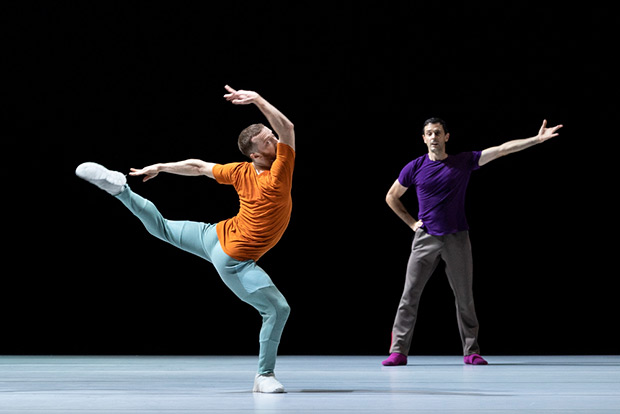
© Foteini Christofilopoulou. (Click image for larger version)
William Forsythe
A Quiet Evening of Dance: Prologue, Catalogue, Epilogue, Dialogue, Seventeen/Twenty One
★★★★✰
London, Sadler’s Wells
4 October 2018
Gallery of pictures by Foteini Christofilopoulou
www.williamforsythe.com
www.sadlerswells.com
William Forsythe obliges audiences to share the intense concentration of his dancers. Sometimes he’s lit the stage so dimly that you are forced to peer; or he slams down the curtain in mid-performance, hides the dancers behind screens or deafens them and us with Thom Willems’s sound scores. In A Quiet Evening of Dance, he requires us to listen.
In the first half of the evening, microphones on the stage floor amplify the dancers’ breathing and padded footfalls; they are listening to their internal music, or the plinks and plonks of Morton Feldman’s piano studies. In the second half, we all rejoice to hear Jean-Philippe Rameau’s baroque compositions, designed for dancing.
Act I is introduced by a brief Prologue, with faint birdsong replacing Willems’s scheduled contribution. Parveneh Scharafali and Ander Zabali skirt swiftly around each other, wearing long white gloves that make their arms resemble wings. The next duo, Jill Johnson and Christopher Roman ‘improvise’ a Catalogue of body parts in what is at first a static dance in silence.
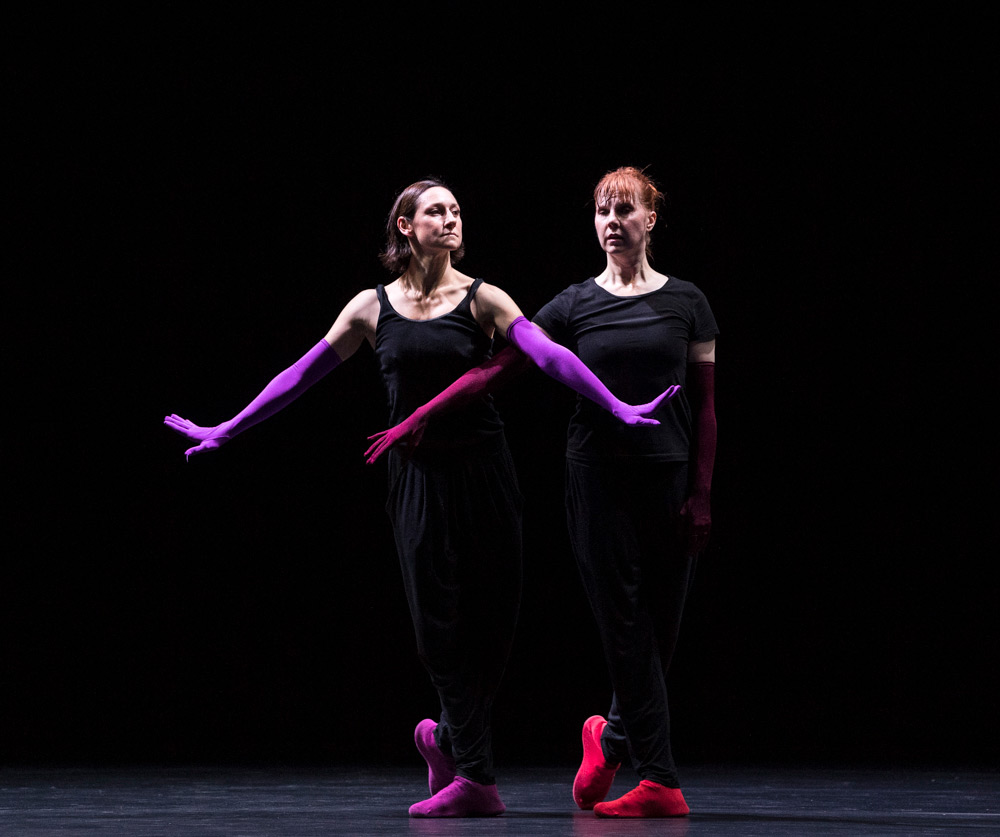
© Foteini Christofilopoulou. (Click image for larger version)
Side by side, they respond to each other’s gestures, articulating hands, elbows and shoulders in order. They obey the basic rules of balletic port de bras in not crossing the central line of their torso. Then they elaborate, twisting and torquing, entwining their arms, adding in bent wrists, curled fingers and courtly flourishes. A quiet clap signals the use of the legs, touching the knees and stretching the feet into tendus. A full-bodied gestural dialogue develops between them, punctuated by crouching, standing and changing direction. Catalogue ends with their embracing their own and each other’s head, the motor of their actions. They seem to have communicated telepathically, with Roman the instigator.

© Foteini Christofilopoulou. (Click image for larger version)
They are joined by the first pair of dancers for Epilogue, in a more conventional use of synchronised and individual movements to Morton’s music. Differently coloured gloves and sock-boots accentuate the speed of their gyrations, timed to finish on the last note of a piano phrase. Rauf “RubberLegz” Yasit is a wild card in their midst, a hip-hop specialist who is immersing himself in Forsythe’s choreography. Yasit looks out of place in Epilogue because he doesn’t share the others’ ballet training. He’s inelegant, flat-footed, with acrobatic skills that work better in Act II, when he is deliberately cast as a joker.
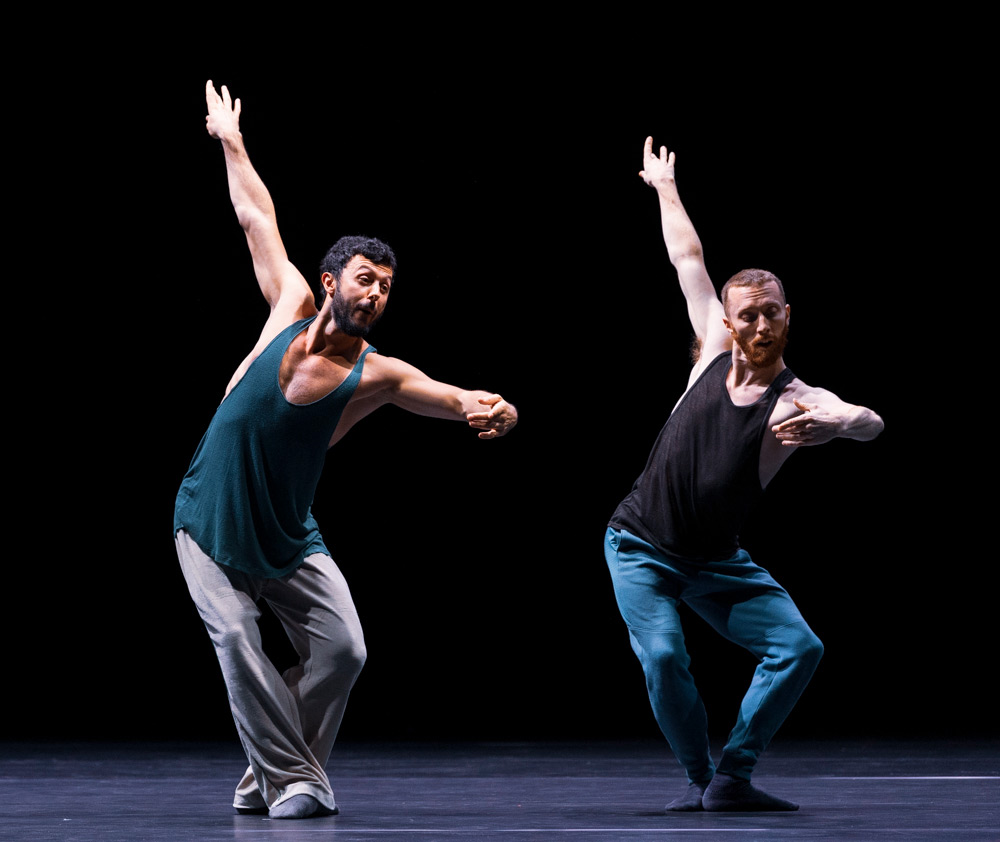
© Foteini Christofilopoulou. (Click image for larger version)
Act I concludes with an existing duet, DUO2015, now called Dialogue. It was last seen as part of Sylvie Guillem’s farewell programme, when it was danced then, as now, by two men, Brigel Gjorka and Riley Watts. Forsythe devised it originally for two female dancers in Ballett Frankfurt in 1996, playing with their ability to go in and out of synch. The two male dancers perform (mostly) the same choreographed sequences, influencing each other’s timing and spacing. Unlike the Catalogue pair, they know precisely what comes next, co-ordinating their rhythms so that they can snap back from counterpoint into unison. We, however, can’t predict what will come next, which makes the duet fascinating to follow. It builds to a conclusion after about 15 minutes with a neat finish in fifth position.
After an interval comes Act II, a suite of dances demonstrating the evolution of ballet from baroque court spectacles in the 17th century to the present day. The suite is aptly entitled Seventeen/Twenty One.
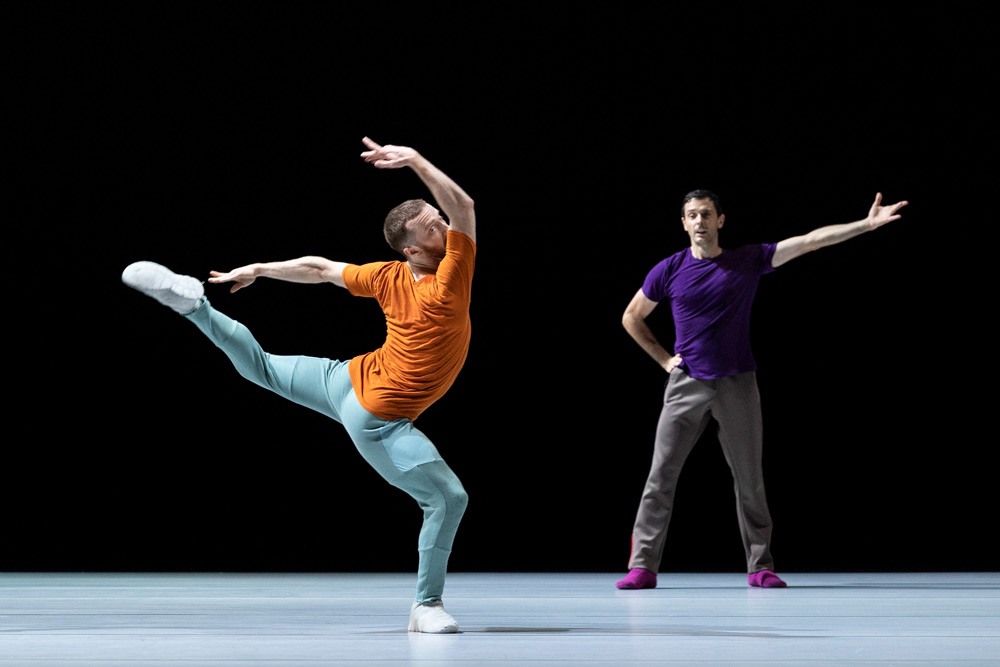
© Foteini Christofilopoulou. (Click image for larger version)
It starts with three men in witty danced repartee to Rameau’s 18th century music, punctuated with disagreements, challenges and punch lines. Roman is essentially the dance master of the piece, instructing rebellious modern student Johnson, and moulding b-boy Yasit into folded shapes. Later on, RubberLegz gets to show what he can do, tying himself in knots and spinning on his shoulders, arousing applause and sympathetic laughter.
He is watched coolly by Scharafali, who has her own fleet-footed solo, as well as a pas de deux with Watts. We’re shown how the side-by-side duets earlier in the programme can become a partnership in which the man enables the woman to move more expansively than she can on her own. A final ensemble brings together all the dancers in their brightly coloured footwear and elbow-length gloves for a kaleidoscopic finish.

© Foteini Christofilopoulou. (Click image for larger version)
What struck me as a paradox in this scintillating evening is that the cast cannot reveal the articulation of their feet in their bootees, which are basically socks with anti-slip soles. Ballet training requires feet to become expressive instruments, yet they play little part in the Catalogue of body parts. Gjoka and Watts are ace at pointing their toes in Dialogue’s tendus, but their jumps and pas de bourrées in Seventeen/Twenty One are blurred by their footwear. Presumably the bootees are to protect the hardworn feet of this company of veterans, whose impressive c.v.s occupy many columns in the programme.
Forsythe certainly isn’t making the case that ballet must give way to street dance forms in the 21st century. He’s just surprising himself and his audience with new discoveries of what bodies and ballets can do. He set his virtuoso new Playlist for English National Ballet’s male dancers to loud house music, and now he’s showing quietly how maturity can excel, making us listen and watch ever more acutely.












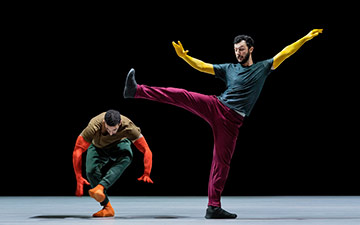




You must be logged in to post a comment.